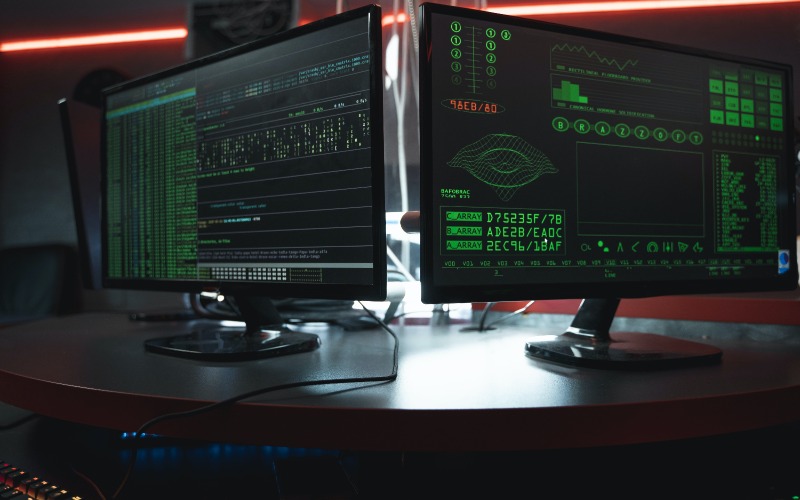At a time when cyberattacks are surging and social engineering is the weapon of choice for many cybercriminals, companies increasingly recognize the necessity of cybersecurity awareness training (CSAT). However, too many company leaders still treat it as a box they can check a few times a year, presenting the illusion of due diligence without significantly improving the cybersecurity posture of their organizations. The realities of our threat landscape demand that awareness training be part of an enterprise risk management strategy.
Effective CSAT is about much more than the occasional PowerPoint presentation or email blast reminding employees that cybersecurity is important. CISOs and other company leaders must provide employees with engaging and consistent CSAT content that holds their attention and helps them retain what they learn. This content should be personalized based on each employee’s unique behavioral profile and learning style, which will help companies identify the psychological vulnerabilities of their workforce and maximize the impact of training content. Companies must be willing to hold themselves accountable for all the above with rigorous assessments (such as phishing tests) and regular reviews of their cyber readiness.
The ultimate goal of a cybersecurity awareness training program is long-term behavior change. When healthy cybersecurity habits become second nature to your employees, the company will be well on its way to establishing a culture of cybersecurity. Comprehensive cybersecurity awareness is the best way to ensure the organization stays safe over the long term.
Employee Engagement Is Essential
The first step toward building an effective CSAT platform is providing content that will capture employees’ attention. Engagement is critical for information retention, but it has never been more difficult to keep employees focused on what they’re learning. There’s plenty of competition for employees’ attention – a recent Microsoft survey of 31,000 business leaders, managers, and employees found that 68 percent of respondents don’t have enough uninterrupted time to focus at work.
According to the latest Verizon Data Breach Investigations Report, almost three-quarters of breaches involve a human element. This is a stark reminder that compelling and memorable CSAT content is indispensable for keeping companies safe – and a lack of engagement with that content poses a major risk. There are several key pillars of engaging CSAT content: it must be entertaining and emotionally resonant, personalized, and relevant. CSAT should be based on real-world cyberattacks, tied directly to employees’ roles and responsibilities at work, and customized based on each individual’s behavioral traits, learning styles, and knowledge.
Every employee can share horror stories about workforce training that was more annoying and exhausting than captivating. Your CSAT platform can be a departure from this status quo by providing engaging content, timely information based on real-world breaches, and personalized learning techniques that meet employees’ individual needs.
CSAT Should Be Highly Personalized
There are seven main psychological vulnerabilities that cybercriminals exploit in social engineering attacks: fear, obedience, greed, opportunity, sociableness, urgency, and curiosity. These vulnerabilities vary from employee to employee, and they interact with other aspects of employees’ behavioral profiles differently. This is why CSAT has to be capable of accounting for a wide range of personality types and behavioral patterns, along with diverse learning styles and different levels of knowledge.
Cybercriminals are experts at taking advantage of specific psychological weaknesses. For example, there are many ways phishing schemes, which are among the most common and financially destructive cyberattacks, can manipulate employees into providing access, leaking sensitive information, or transferring money. These attacks might convince employees to explore a fake investment (exploiting greed, curiosity, or opportunity) or tell them they must take immediate action to avoid data theft or some other negative outcome (fear or urgency). Phishing attacks are especially effective when cybercriminals impersonate authority figures to intimidate employees into doing what they say (obedience).
When companies build CSAT around employees’ particular needs and psychological profiles, they won’t just produce more targeted and engaging content – they will also be in a stronger position to evaluate their strengths, weaknesses, and overall cybersecurity posture. This will allow CISOs and other company leaders to hold themselves and their employees accountable.
Making Accountability a Top Priority
One of the biggest challenges CISOs face is generating stakeholder support in the C Suite and on their boards. Misalignments can have many harmful consequences – from insufficient funding for cybersecurity to a lack of overall cyber preparedness. This is why CISOs have to be capable of demonstrating the effectiveness of cybersecurity initiatives like CSAT while identifying potential vulnerabilities cybercriminals can exploit. Accountability should be built into your CSAT platform in the form of robust assessments like simulated phishing, threat reporting, and organization-wide risk analysis.
At the same time, CISOs need all the help and support they can get. Everyone playing defense against cyberattacks faces an inordinate amount of risk, and CISOs deserve their colleagues’ support in implementing and committing to a cybersecurity awareness training solution.
Because the case for cybersecurity has never been stronger. According to IBM, the average cost of a data breach hit an all-time high of $4.45 million this year, and just one-third of breaches were “identified by an organization’s security teams or tools.” IBM also found that one of the top mitigating factors for the overall cost of a breach was cybersecurity training – ranking above encryption, cyber insurance, data security and protection software, and others.
CSAT has a proven record of drastically improving organizations’ ability to defend themselves from evolving cyberattacks, but CISOs shouldn’t expect this record to speak for itself. Like any cybersecurity intervention, CSAT must keep proving its value and adapting to an ever-shifting cyber threat landscape.
Companies need holistic solutions to the increasingly diverse and destructive cyber threats they face today. By ensuring that their CSAT platform prioritizes engagement, personalization, and accountability, CISOs, and other company leaders will make comprehensive cybersecurity a core element of their culture.










